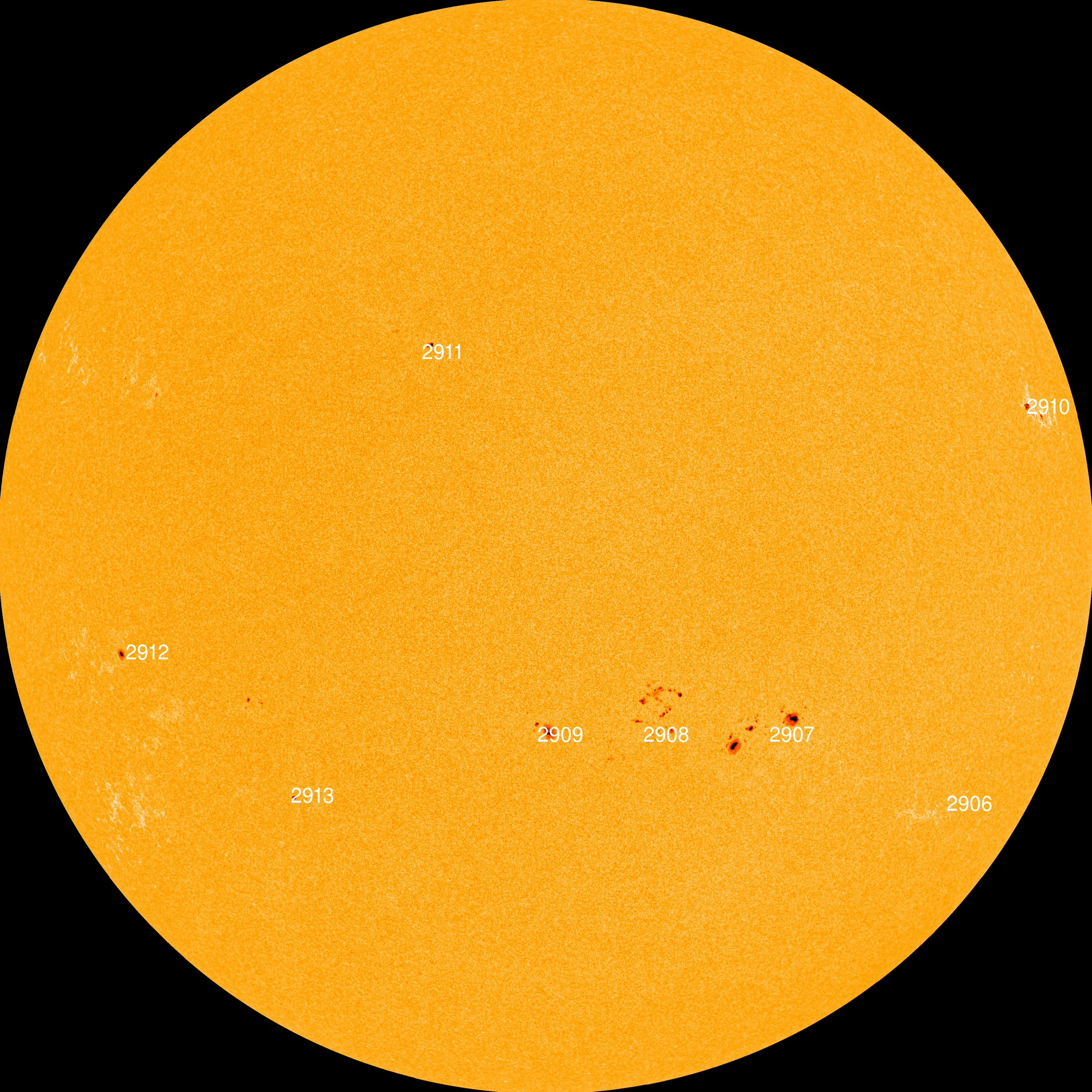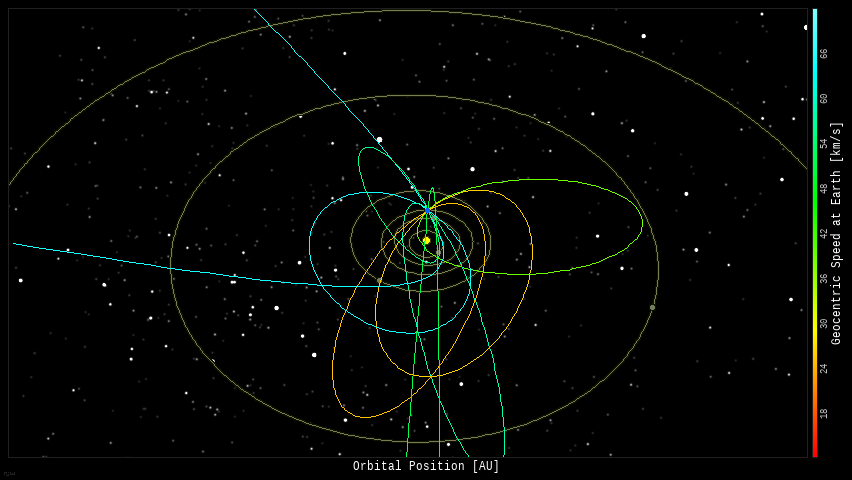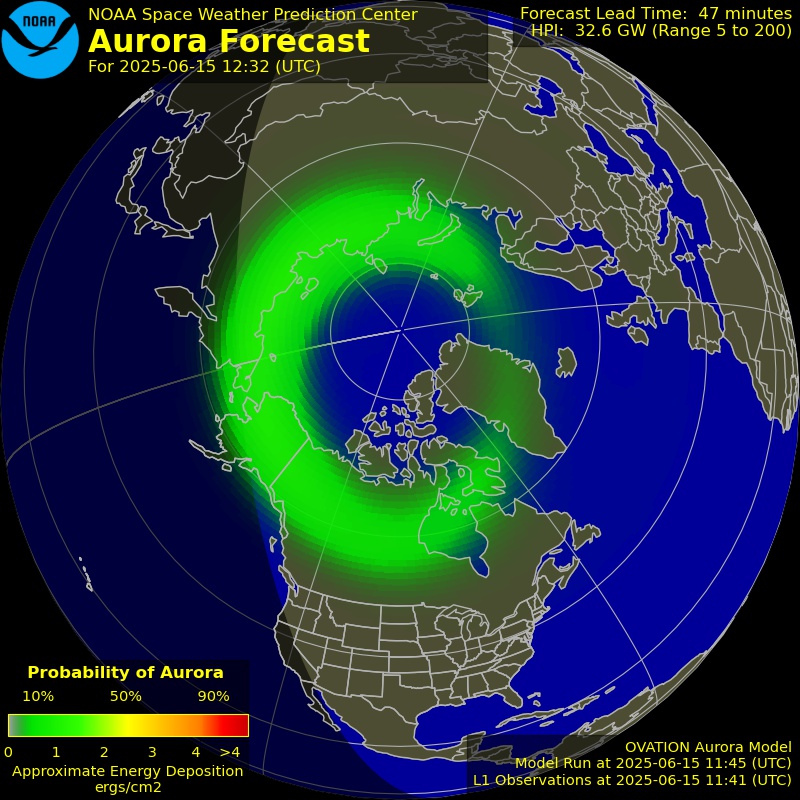People of Earth: Happy Holiday Season!
A couple days a every month, during the wee hours of morning, the waning gibbous Moon shines through my kitchen skylight. I gawk up at it as I refill my coffee, and give a passing thought to setting up my telescope in the middle of the kitchen floor… but there’s really not enough space.
I’m going to be playing Santa again this year for my granddaughter, and my wife recently got an absolutely beautiful matching Mrs. Claus costume from our master seamstress friend!
-

Connie in her Mrs. Claus costume with her hood up. -

Bob’s vintage Santa outfit – custom made by Jennifer Skwarski. Staff modded by Bob’s wife Connie. -

Connie in her Mrs. Claus costume with her cape off. -

Connie in her Mrs. Claus costume with her hood down.

Jupiter, Saturn and Venus appear in the southwestern sky after sunset all week. Today is the one-year anniversary of the very close conjunction of Jupiter and Saturn – they’ve separated a little over 17 degrees in the sky since.

Mars appear low above the southeastern horizon near the star Antares before sunrise all week.

The Moon appears near the star Pollux above the western horizon before sunrise on Dec. 21st.

The Moon appears near the star Regulus above the southwestern horizon before sunrise on Dec. 24th.

The Moon appears near the star Spica above the southern horizon before sunrise on Dec. 27th.


- The Moon is a Waning Gibbous – rising after sunset, visible high in the sky after midnight, and visible to the southwest after sunrise.
- The Third Quarter Moon occurs on Dec. 26th – rising around midnight, and visible to the south after sunrise.
- After Dec. 26th, the Moon will be a Waning Crescent – visible low to the east before sunrise.

If you click on the Moon image above, or click this link, you will go to NASA’s Moon Phase and Libration, 2021 page – it will show you what the Moon looks like right now. If you click the image on that page, you will download a high-rez TIFF image annotated with the names of prominent features – helpful for logging your lunar observations!
Moon News

WOW! The Sun is covered in spots! 8 names spots, and a lot of discolored plage regions – Spaceweather.com says this is the largest number of visible spots in more than 4 years!

Videos courtesy of NASA/SDO and the AIA, EVE, and HMI science teams.
You can view the Sun in near real-time, in multiple frequencies here: SDO-The Sun Now.
You can create your own time-lapse movies of the Sun here: AIA/HMI Browse Data.
You can browse all the SDO images of the Sun from 2010 to the present here: Browse SDO archive.
Amateur Solar Astrophotography

Solar Corona
Solar wind speed is 597.5 km/sec ▲▲ with a density of 0.7 protons/cm3 ▼▼ at 1214 UT.
Click here to see a near real-time animation of the corona and solar wind from the Solar & Heliospheric Observatory (SOHO).
Sun News:
Solar Citizen Science – hunt for solar jets!

- Near-Earth Objects (NEOs) discovered this month: 137, this year: 3067 (+55), all time: 27,901 (+54)
- Potentially Hazardous Asteroids (PHAs): 2238 (+1 updated 2021-12-21)
- Total Minor Planets discovered (MPC): 1,143,209 (-112, updated 2021-12-21)
- Total Minor Planets discovered (NASA): 1,113,527 (updated 2021-08-17) – not updated for months.
Upcoming Earth-asteroid encounters:
| Asteroid | Date(UT) | Miss Distance | Velocity (km/s) | Diameter (m) |
|---|---|---|---|---|
| 2016 YY10 | 2021-Dec-21 | 11.3 LD | 9.2 | 23 |
| 2017 XQ60 | 2021-Dec-21 | 13.7 LD | 15.7 | 47 |
| 2021 YB | 2021-Dec-23 | 1.4 LD | 5.8 | 11 |
| 2016 TR54 | 2021-Dec-24 | 16.9 LD | 15.5 | 135 |
| 2018 AH | 2021-Dec-27 | 11.9 LD | 12.7 | 112 |
| 2017 AE3 | 2021-Dec-29 | 9.3 LD | 19.1 | 155 |
| 2014 YE15 | 2022-Jan-06 | 19.3 LD | 6.4 | 8 |
| 2020 AP1 | 2022-Jan-07 | 4.6 LD | 5.7 | 4 |
| 2013 YD48 | 2022-Jan-11 | 14.6 LD | 14.8 | 107 |
| 2021 BA | 2022-Jan-18 | 9.8 LD | 9.1 | 22 |
| 7482 | 2022-Jan-18 | 5.2 LD | 19.6 | 1732 |
| 2018 PN22 | 2022-Jan-21 | 11.4 LD | 2.7 | 11 |
| 2017 XC62 | 2022-Jan-24 | 18.7 LD | 4.3 | 112 |
| 2021 BZ | 2022-Jan-27 | 17.6 LD | 14.6 | 39 |
| 2018 CA1 | 2022-Feb-05 | 9.8 LD | 15.1 | 32 |
| 2007 UY1 | 2022-Feb-08 | 13.9 LD | 6.6 | 89 |
| 2020 DF | 2022-Feb-14 | 12 LD | 8.6 | 20 |
Asteroid News:

On December 20, 2021, the NASA All Sky Fireball Network reported 11 fireballs!
(7 sporadics, 2 Dec. Leonis Minorids, 1 Quadrantid, 1 Coma Berenicid)

Fireball News:
If you see a bright meteor or a fireball, please REPORT IT to the American Meteor Society and the International Meteor Organization!

Position of the planets & several spacecraft in the inner solar system on December 20th:

Position of the planets in the middle solar system:

Position of the planets in the outer solar system:

Another view of Makemake’s orbit:

Solar System News

See a list of current NASA missions here: https://www.jpl.nasa.gov/missions?mission_status=current

ex·o·plan·et /ˈeksōˌplanət/, noun: a planet orbiting a star other than the Sun.
Data from the NASA Exoplanet Archive
* Confirmed Planets Discovered by TESS refers to the number planets that have been published in the refereed astronomical literature.
* TESS Project Candidates refers to the total number of transit-like events that appear to be astrophysical in origin, including false positives as identified by the TESS Project.
* TESS Project Candidates Yet To Be Confirmed refers to the number of TESS Project Candidates that have not yet been dispositioned as a Confirmed Planet or False Positive.
Exoplanet News:
I just LOVE what NASA has been doing with posters in recent years!

SpaceWeather.com Realtime Aurora Gallery: https://spaceweathergallery.com/aurora_gallery.html
Latest Aurora Oval Forecast

80% of World’s population lives under light polluted skies [Study].
- Visit an International Dark Sky Park: https://www.darksky.org/our-work/conservation/idsp/parks/
- If you live in Michigan, visit the Michigan Dark Skies site: https://sites.lsa.umich.edu/darkskies/

Work at NASA!
Had the opportunity of being a NASA flight controller or mission control engineer presented itself when I was a young man, my life would likely have taken a different course!
Beautiful Universe: Comet C/2021 A1 (Leonard)
This time-exposure of the comet was taken by Doug Bock, an astrophotographer buddy and member of the Warren Astronomical Society.

C/2021 A1 (Leonard) is an inbound long period comet discovered by G. J. Leonard at the Mount Lemmon Observatory on 3 January 2021 (a year before perihelion) when the comet was 5 AU (750 million km) from the Sun. This was the first comet discovered in 2021 and it has a retrograde orbit.
On 12 December 2021 the comet was 0.233 AU (34.9 million km) from Earth and on 18 December 2021 it was 0.028 AU (4.2 million km) from Venus. It will make its closest approach to the Sun on 3 January 2022. On 10 October the comet showed a short but dense dust tail. In early December the comet had an apparent magnitude (coma+nucleus) of around 6. The first reports of naked eye observations by experienced observers started coming in on 5 December 2021. Much like observing Messier 33, the low surface brightness of the comet can make it difficult to observe near urban areas.
As of 20 December 2021, the comet is in an outburst around apparent magnitude 3, making it a naked eye comet for the Southern hemisphere. – Wikipedia
Software Apps used for this post:
NASA Eyes on the Solar System: an immersive 3D solar system and space mission simulator – free for the PC /MAC.
Stellarium: a free web-based planetarium app. It’s a great tool for planning observing sessions.




